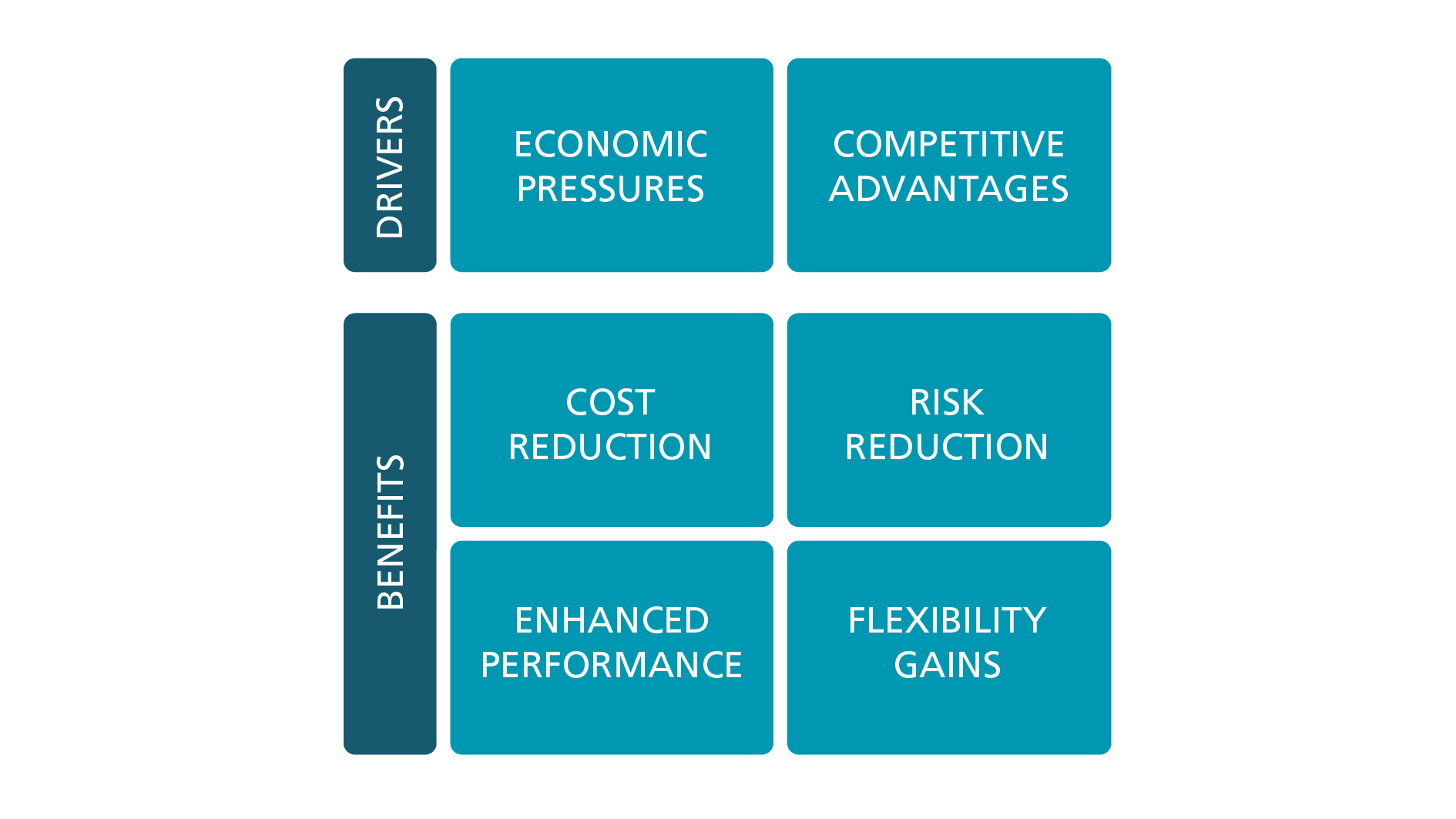
How do I ensure complete alignment of IT and OT? In 4 steps to successful cooperation
- 20 September 2019
- 3 minutes
Ever increasing global competition, margins that are under pressure, and changes to the chain place substantial strain on large numbers of manufacturing companies to work even more efficiently. Efficiency improvement can be gained by optimising cooperation between Information Technology (IT) and Operational Technology (OT).
Two separate worlds
IT is a child of the business, where everything revolves around financial data. OT is the engine of the work floor, where the main, and nearly obsessive driving force is productivity. Two separate worlds that suddenly have to cooperate in order to make their organisation future-proof. This cooperation does not always happen without problems or setbacks. What can you do? This blog discusses four important steps that can help in aligning the two departments.
- Understand the differences between IT & OT
- Identify the benefits of cooperation
- Start small
- Combine forces to increase your strength.
1. Understand the differences between IT & OT
Improved cooperation between OT and IT begins by recognising the differences.
By identifying and discussing these differences you’ll discover in which areas you have shared objectives or, on the contrary, you have conflicting interests. These differences can be classified into a number of distinct categories:
| Information Technology | Operational Technology | |
| Technical mismatch –
Lack of universal standard between systems |
· Time-sharing OS
· IT-related data sources · Internal variables are important |
· Real-time
· Technical data sources · Substantial influence from external variables |
| Cultural differences
Varying task profiles can lead to a gap
|
· Industrial specialists
· Trained in engineering with less focus on IT · Production-orientated perspective |
· Background in commerce or information science
· Commercially-orientated perspective |
| Ownership and Governance –
IT and OT have different ownership |
· COO ownership
· No central governance on OT strategy (separate responsibilities) |
· CIO ownership
· Governance on IT strategy and platforms |
2. Identify the benefits of cooperation
The next step towards successful cooperation consists of focusing on the benefits. Start asking the question ‘why are we doing this?’ before you dive into ‘how will we do this?’. The relevant issue at stake is all about how to improve your competitive position. You’re seeing that international competitors are entering the market with similar products, but at lower prices. In order to keep up with these competitors, you will have to reduce your costs in the short term. However, your long term strategy will have to focus on investing in new, innovative products that will allow you to stay ahead of the competition.

Benefits & drivers
From cost savings to connected factory
The ultimate goal is to create a connected factory in which all assets and systems are interconnected. The data and insights provided by this interconnectivity will serve as the foundation for new and innovative business models that will make your organisation truly future-proof. If you zoom into this model, you will see four benefits of a closer cooperation between IT and OT.
Cost reduction: applying the same technology and standards for IT and OT will promptly result in synergies that reduce your costs.
Risk reduction: external cyber-attacks or strict internal governance will affect the organisation as a whole. Addressing this issue collectively by IT and OT will increase the strength of your digital security.
Improved performance: integration of IT and OT makes it easier to add new products to the existing organisation, thus avoiding wastage and reducing the time-to-market.
Increased flexibility: Cooperation increases the transparency with regard to costs and cost structures, which helps you to identify opportunities to increase efficiency more quickly. What’s more, flexibility is of crucial importance in promptly anticipating changes in the market.
3. Start small
Now that you know who needs to cooperate and why, the question arises: how? Our advice is simple: start on a small scale. Work together offline, and spend a day diving into the data that you’re already collecting. Identify a small-scale process that you can improve together and get started. Develop a pragmatic strategy and continuously show the impact of the innovation process. Make sure that IT always emphasises the gain for the operation: “by applying IoT within this process we will improve in terms of this KPI.”
External help as driver of innovation
This approach will create trust, which is the breeding ground of a successful digital transformation. IT and OT get to work together in a cooperative mode that is a prerequisite for real improvement. Many organisations hire external innovation experts in order to drive this mode. These experts work in an unbiased manner while bringing different departments together.
4. Combine forces to increase your strength
In case you didn’t realise: you need a new mindset in order to remain successful as a manufacturing company. A mindset in which your value chain shifts into a value network. Whereas you used to achieve tremendous successes as a link in the value chain, now you are dependent on suppliers, logistics service providers and possibly even your competitors.
SaaS as ultimate cooperation
A nice example of this new mindset is the shift from customisation to SaaS. Traditionally nearly all digital processes in manufacturing companies consist of customisation. After all, ‘our processes are unique, aren’t they?’ Reflection at a deeper level shows that many organisations face the same challenges. This has a stimulating effect on the growth of software-as-a-service, whereby the same solutions are purchased in license form by multiple organisations. And if a used encounters a specific ‘first-of-a-kind’ challenge, the solution that is developed to address the challenge is made available for all users.
This model is sometime met with resistance. ‘Why help someone else’, is the sceptical comment. However, we maintain a different belief. In a market that is globalising at a rapid speed, you really need each other to take a strong stand. The changes in the current market are occurring faster than ever before which means you’re always lagging behind the facts if you contract parties to develop customised systems for all challenges.
How can OrangeNXT help?
OrangeNXT’s action list features improved cooperation between IT and OT for manufacturing companies. The first step consists of an IT/OT assessment in which we determine the baseline: what is the current level of cooperation? Then we proceed to the next step, which can consist of the 20 day challenge, in which we work together with your organisation to evolve a real business case into an operational IT solution. During the following step, we work together with Microsoft and the customer to develop powerful solutions that we launch on the market as repeatable solution. We have already applied this successful approach in the following companies:
Ampelmann – Remote monitoring.
Hytech Support – Hytech Service Cloud.
BAM Infra Nederland B.V. – Digital Assetmanagement.
How do I ensure complete alignment of IT and OT? In 4 steps to successful cooperation
Case study
